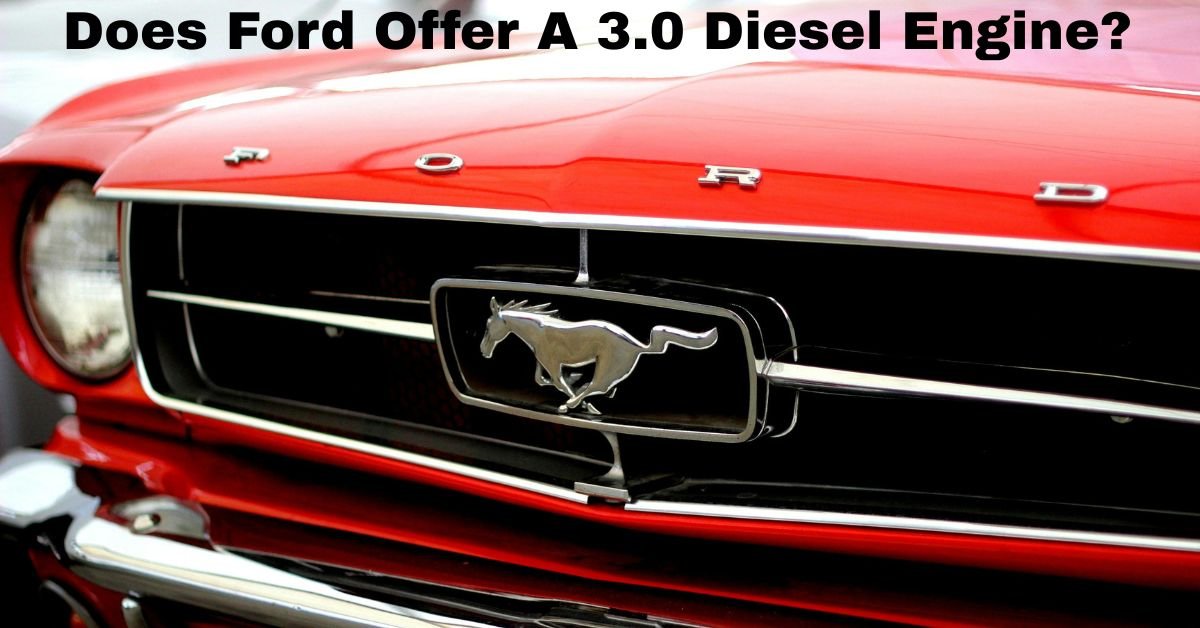When discussing powerful and efficient truck engines, diesel options often come to mind for their torque, towing capability, and longevity. Among the many questions truck and SUV buyers ask is whether Ford, one of the most popular American automakers, offers a 3.0-liter diesel engine. The short answer is yes, Ford has offered a 3.0L Power Stroke V6 diesel engine — but there are a few important caveats to understand depending on the model year and vehicle type.
Does Ford Offer a 3.0 Diesel Engine?
The Ford 3.0L Power Stroke Diesel: Overview
As part of its F-150 lineup, Ford debuted the 3.0L Power Stroke V6 Turbo Diesel engine in 2018. This engine was designed to deliver excellent fuel efficiency without sacrificing the towing performance truck owners expect.
Built in collaboration with Ford’s European arm, the 3.0L Power Stroke diesel shares engineering DNA with Jaguar Land Rover’s 3.0L diesel used in some Range Rover and Land Rover vehicles. Ford’s version was optimized for truck use, particularly in terms of low-end torque and reliability under load.
Key specs of the Ford 3.0L Power Stroke V6 diesel include:
- Horsepower: 250 hp @ 3,250 RPM
- Torque: 440 lb-ft @ 1,750 RPM
- Towing capacity: Up to 11,400 lbs (when properly equipped)
- Fuel economy: Up to 30 MPG highway (in 2WD versions)
These figures made it a compelling choice for drivers looking to balance towing power with highway efficiency.
Which Ford Vehicles Had the 3.0 Diesel?
The primary vehicle that offered the 3.0L diesel was the Ford F-150. Specifically, this engine was available in certain trims from the 2018 to 2021 model years, including:
- Lariat
- King Ranch
- Platinum
It wasn’t offered on lower trims like the XL or XLT initially, though availability varied by model year.
In addition to the F-150, Ford also offered a 3.0L diesel engine in the Ford Ranger Raptor in certain international markets (not the U.S.). However, this was a different diesel engine and not the same Power Stroke V6 used in the F-150.
Must Read: Why Does My Engine Shake?

Why Did Ford Discontinue the 3.0L Diesel?
Ford stopped producing the F-150’s 3.0L Power Stroke diesel as of the 2022 model year. There were a few reasons for this decision:
- Shifting Market Demand: Consumer interest has increasingly moved toward gas-powered and hybrid engines. Ford has invested heavily in its EcoBoost turbocharged gasoline engines and PowerBoost hybrid, which offer competitive towing and fuel economy figures.
- Stricter Emissions Standards: Diesel engines face tougher emissions regulations, especially in the U.S., which can make them more expensive to develop and certify.
- Introduction of Electric Options: With the arrival of the F-150 Lightning all-electric truck, Ford is pivoting toward electrification. Offering a wide range of powertrains — including diesel — no longer fits as cleanly into their long-term strategy.
What Are the Alternatives Now?
If you’re looking for a newer F-150 with excellent torque and towing capacity, here are some current alternatives to the 3.0L diesel:
- 3.5L EcoBoost V6: Delivers up to 500 lb-ft of torque and strong towing capacity.
- 3.5L PowerBoost Hybrid: Combines gas and electric power for efficiency and torque.
- 5.0L V8: A reliable choice with lots of power for hauling and towing.
Each of these options can match or exceed the performance of the 3.0L diesel in many use cases, and they come without the added cost and complexity of diesel maintenance.
Final Thoughts
So, does Ford offer a 3.0 diesel engine? They did, but not anymore — at least not in current U.S. models. From 2018 to 2021, the 3.0L Power Stroke diesel was a highly respected option for F-150 buyers who needed efficiency, torque, and towing capacity. Today, Ford’s focus has shifted toward hybrid and electric technologies, but diesel fans can still find the 3.0L diesel on the used market or in commercial models.
If you’re considering a diesel F-150, it might be worth looking at those 2018–2021 models. Just make sure to consider your maintenance expectations, fuel costs, and long-term use — diesel still has its place, but it’s no longer front and center in Ford’s future plans.
